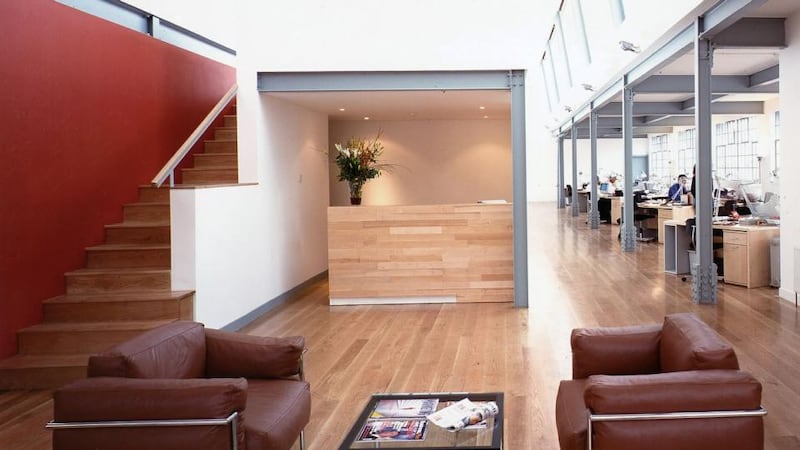We’ve come a long way since French architect Eugène Viollet-le-Duc promoted “faithful restoration”– in reality, an idealised reconstruction of historic buildings to a conjectural original condition – and applied it to the medieval walls of Carcasonne and even to the cathedral of Notre Dame de Paris.
Or the alternative theory of conservation – also articulated in the mid-19th century, by William Morris and his mentor, John Ruskin – that historic buildings should be conserved in such a manner as to reflect their age. In other words, there should be no obviously contemporary interventions.
Shaping the Future , a new guidance manual from the Department of Arts and Heritage, notes that current thinking is based on the International Council on Monuments and Sites' Venice Charter (1964), which insists that conservation has to respect "the valid contributions of all periods".

“Today the concept of the historic built environment is much broader than that understood by 19th-century conservationists,” the manual says. As well as focusing on individual monuments, it embraces more modest buildings in everyday use where “people live and work or visit and stay”.
The manual presents a series of case studies to “assist planners and others in understanding the current guiding principles of conservation and restoration” so that they can devise “appropriate strategies from the macro to the micro urban level” how to conserve and adapt historic buildings and places.
It’s not just about buildings. “Today it is universally accepted that a well-designed, well-managed and well-used public realm is essential to the vitality and vibrancy of urban places,” as the manual says. Cities, towns and villages with high-quality streets, squares and parks are simply more successful.
Jane Jacobs 's landmark 1961 book, Death and Life of Great American Cities , gets an endorsement for addressing the causes of urban degeneration and for its prescription of the remedies required to reverse this decline – diversity, mixed uses, small blocks, aged buildings and concentration of people.
"In Ireland, whether in the organic informality of places with early origins like Kells, Athenry or Viking Dublin, or in the rational layouts of planned settlements such as Portarlington, Mitchelstown or Georgian Limerick, the historic patterns of streets and squares still form the backbone of their urban structure."
Prepared by Paul Keogh Architects, who also did the Department of the Environment's retail design manual, it says: "Even the most fervent champions of our rural heritage acknowledge that the likes of Eyeries, Birr, Cobh, Westport, Kilkenny and Cork are vitally important expressions of our history and culture."
Shaping the Future calls on local authorities to include public realm strategies in their plans, based on a recognition that the design of buildings that shape our streets and squares "define their character and quality", as do the layout, landscaping, surfaces, lighting and street furniture of these urban spaces.
Case studies to show plan-making at the level of historic city and town centres include the 1994 Cork Historic Centre Action Plan – judged "ahead of its time" in addressing the decline of the city's medieval core – and the Kilkenny Local Area Plan as well as the Liberties Local Area Plan in Dublin, at a neighbourhood level.
One of the most important lessons is that "each incorporated the input of key stakeholders – elected members, local officials, service providers, statutory bodies, business interests and community groups."
Also, the plans were all prepared by integrated, multi-disciplinary teams of qualified professionals.
The 1991 Temple Bar Framework Plan is cited as an example of integrating new and old in a fine-grained urban setting. “Despite criticisms, mostly arising from the overwhelming success of the area’s tax-incentivised ‘evening economy’, the area endures as a major tourist and leisure destination,” it says.
On the "adaptive re-use" of historic buildings, the manual's approach is informed by the Italian theory of Restauro Critico , which is based on a critical interpretation of the original structure, with a clear distinction between old and new elements, "without creating a historical fake or an aesthetic outrage" as Cesare Brandi put it.
Featured projects “combine the new and the old . . . in ways that create an architecture which is richer and more dynamic . . . yet they retain the essential values of the original intact for future generations.” However, the authors concede that this is not needed in every case, as “some ruinous monuments are best left as ruins.”
Examples include the Main Guard in Clonmel, Co Tipperary; a warehouse conversion in Barrow Street, near Google 's Dublin headquarters, and Stack A in the Custom House Docks, which was renovated by Dublin Docklands Development Authority for €45 million as the (failed) CHQ shopping mall; it is now for sale at €10 million.
The Milk Market in Limerick, with its white tented roof, has been an unqualified success.
Equally remarkable in their own way are small works to transform ordinary houses into brighter, more interesting places to live, and the conversion of an old gunpowder store on Rocky Island, in Cork Harbour, into a crematorium.
In his foreword, Minister for Arts and Heritage Jimmy Deenihan describes our built heritage as a "national asset" and says its enhancement "plays a major role in increasing Ireland's attractiveness as a tourism destination".
A shame, then, that the Heritage Council with no money to provide grants.
Shaping the Future: Case Studies in Adaptation and Reuse in Historic Urban Environments is published by the Stationery Office, price €10, or available free online by going to publications at ahg.gov.ie











